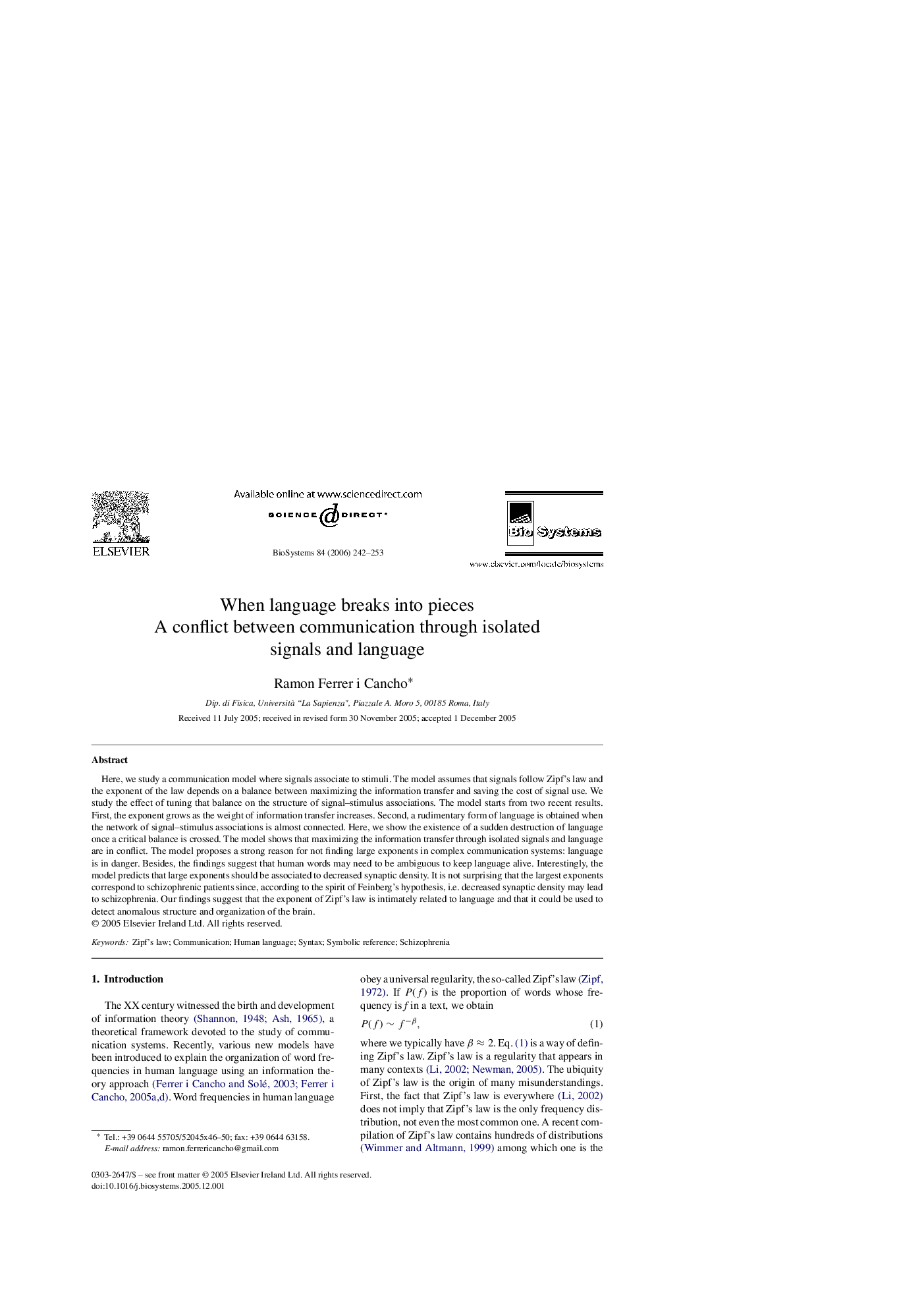| کد مقاله | کد نشریه | سال انتشار | مقاله انگلیسی | نسخه تمام متن |
|---|---|---|---|---|
| 2077222 | 1079554 | 2006 | 12 صفحه PDF | دانلود رایگان |

Here, we study a communication model where signals associate to stimuli. The model assumes that signals follow Zipf’s law and the exponent of the law depends on a balance between maximizing the information transfer and saving the cost of signal use. We study the effect of tuning that balance on the structure of signal–stimulus associations. The model starts from two recent results. First, the exponent grows as the weight of information transfer increases. Second, a rudimentary form of language is obtained when the network of signal–stimulus associations is almost connected. Here, we show the existence of a sudden destruction of language once a critical balance is crossed. The model shows that maximizing the information transfer through isolated signals and language are in conflict. The model proposes a strong reason for not finding large exponents in complex communication systems: language is in danger. Besides, the findings suggest that human words may need to be ambiguous to keep language alive. Interestingly, the model predicts that large exponents should be associated to decreased synaptic density. It is not surprising that the largest exponents correspond to schizophrenic patients since, according to the spirit of Feinberg’s hypothesis, i.e. decreased synaptic density may lead to schizophrenia. Our findings suggest that the exponent of Zipf’s law is intimately related to language and that it could be used to detect anomalous structure and organization of the brain.
Journal: Biosystems - Volume 84, Issue 3, June 2006, Pages 242–253